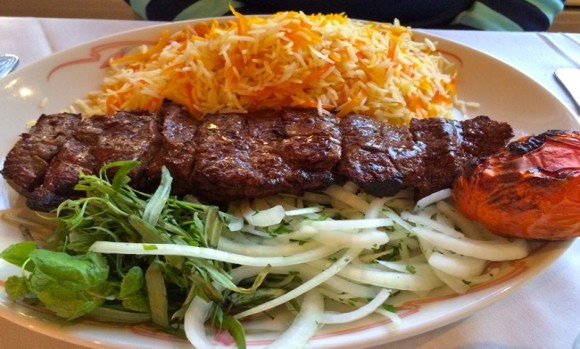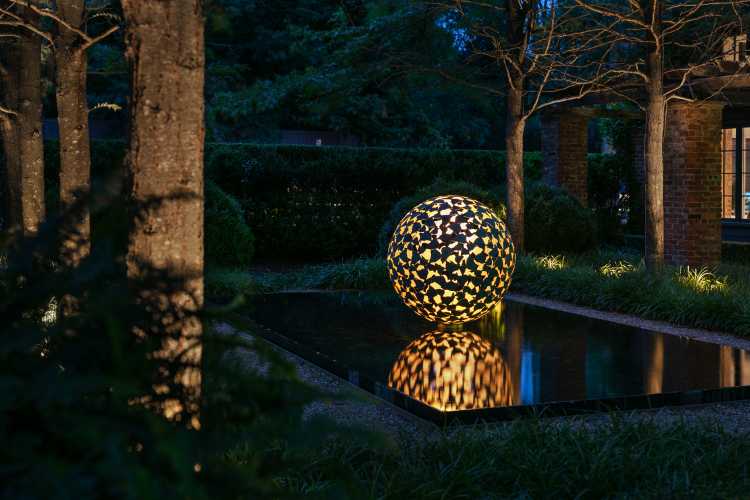Alley Pond Park: A Birding ‘Hot Spot’
In the spring Alley Pond Park is a magnet for migrating birds offering them the gift of rest and food on their long journeys north. A few years ago during the spring migration I started to walk it with serious birders who know not just its paths but also its plentiful trails off the beaten path, which are rich with bird life.
A small red and black bird, which looks much like a male cardinal, the male scarlet tanager, is directly overhead. This bird is a treat. He has a bright red body and the under part of its tail is black as are the sides of the bird’s folded wings. Nicknamed the “firebird” this migrant winters in South America and likes tall trees making it difficult for birders to see.
A male Baltimore oriole is high in a tree, the sunlight bouncing off its yellow/orange breast. The bird’s black head and back complement black wings that have white bars. The black and yellow/orange colors are in sharp contrast, which gives the oriole its striking appearance. Partially hidden by leaves, it searches for caterpillars and other morsels, I notice that the tree’s tallest leaves are yellowish in contrast to the dark green lower ones and am momentarily struck by the color duality as they sway in the breeze. On their migration from Mexico and South America male Baltimore orioles precede females by a few days. This one doesn’t stay for long and quickly flies off. Instantly a yellow warbler appears in a nearby tree and in an adjacent tree is another. The two meet and fly away in an arch of lemon yellow.
We move on to a pond near which are some tall dead trees. High on a branch stands a green heron. The name is deceiving as the bird is actually wine colored with a grayish back. This fish eater is a high-strung bird but is unmoving as we pass. Moving around the pond a male red-winged blackbird lands on a cattail and holds on as the reed bends low to the water. These birds get their name because they have a red and a yellow epaulet on each shoulder. Direct rays of sunlight falling on the bird make the epaulets seem like they have tiny vertical black lines running along them. This gives them a slightly ragged look like imperfectly sewn on cloth patches. The bird partially raises its wings and its shoulders making the red epaulets look like little twin red bellows.
A raccoon, sound asleep, is perfectly camouflaged in an ash colored tree looking like a large gauzy mass. One paw hangs straight down showing all five toes while its snout-shaped mouth seems to be slightly open showing the tip of a tooth. The raccoon is motionless; we begin to wonder if it’s dead. We all breathe a sigh of relief when someone says that it just drew a breath.
Finding a bird’s nest is like stumbling on a secret hideaway. Ten feet up in the crook of a branch is a cup-shaped one and its occupant, a robin, light bouncing off a brown eye, is working on the straw colored abode. There’s lots of movement as the bird’s yellow bill moves quickly. Finished, the robin flies off into the woods. Soon we are silently scanning a leafy tree. This time there’s a pale tightly woven cup-shaped nest amidst dark green leaves. A sharp-eye veteran birder says that it’s a redstart’s nest. How did he know that it belonged to that fiery looking black and orange warbler? The eyes have it; he saw the bird fly in.
The male rose-breasted grosbeak in a tree offers an unhindered view. Its scarlet breast, set off on the bird’s black head and wings and its otherwise white body. This guy’s a showstopper. The breast has a slight curvature and near it the white is fuzzy giving the bird a warm look, thick additional charming feature. The grosbeak is still for a while then turns and flies away to another branch with both wings moving so fast that each appears to make a half circle against its body.
Thrushes are small brownish birds with dark streaked white breasts and bellies most of which migrate at night. When we see them they are foraging for insects close to the ground or in trees. We spot a wood thrush, which has lots of black dots on its body, which make it exciting to look at. Later a bird with a moderately brown back and tea colored sides puzzles me. It also has brown dots on the breast but not as dark as the wood thrush. It’s a Swainson’s thrush sometimes called the “olive-backed thrush.” This is a new bird for me.
We are going through the bushes around a vernal pool, which fills and drains with the seasons, in search of a spotted sandpiper. My eye falls on the water’s still-as-glass surface. Sticking out of it are numerous aqua plants with unfurling leaves and dark stems. As we walk my eye keeps coming back to the plants, which resemble bouquets, like gifts, spring’s gift to this park, which offers respite and sustenance to migrating birds.
It occurs to me as we are leaving the pond that despite decades of coming here I don’t know where we are and I wouldn’t be able to find my way back. The irony is rich; humans may not know where they are but birds do. It’s all part of the wonder of the spring migration in this park.

































